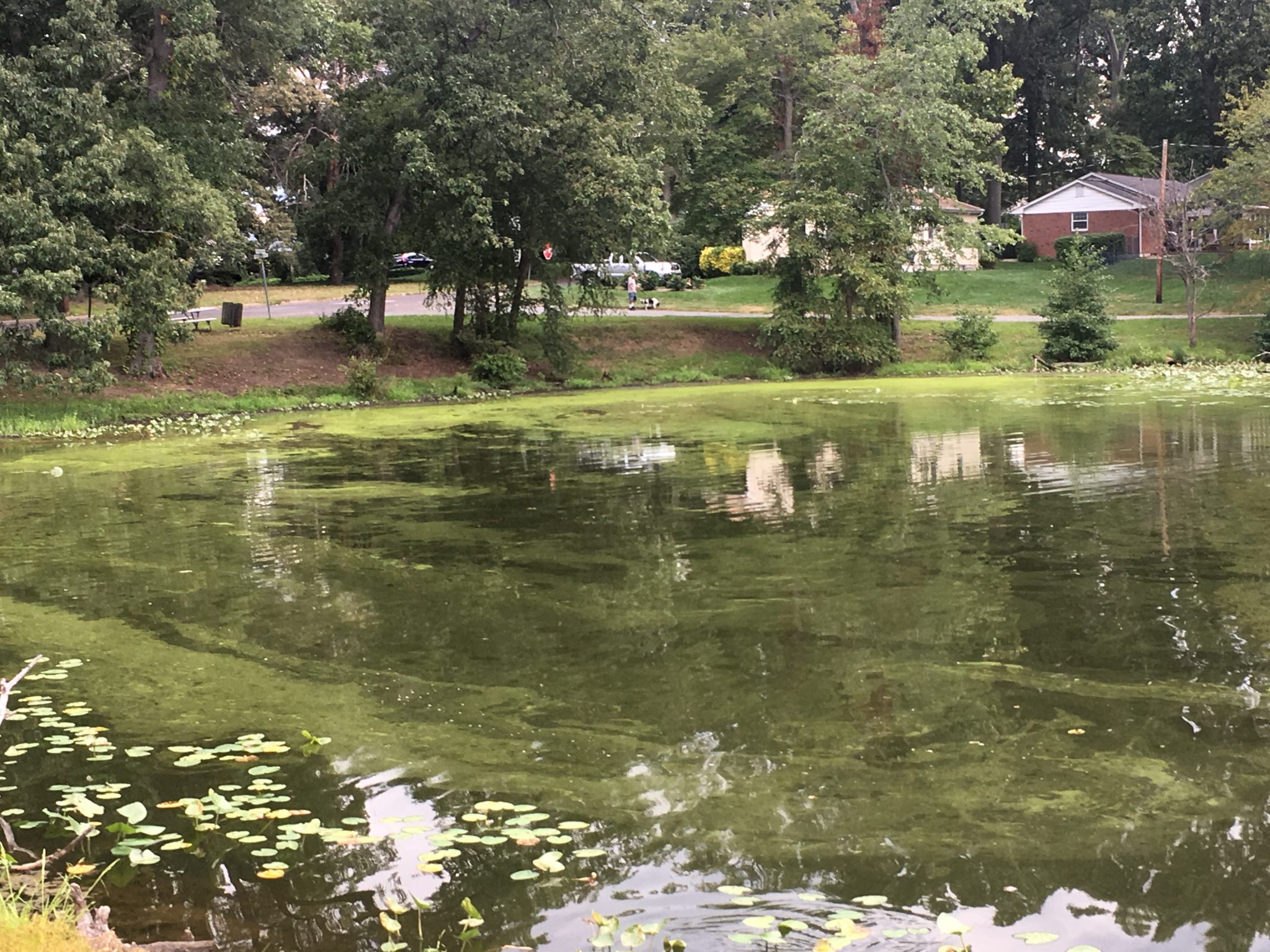Harmful Algae Blooms (HAB) are reported to have been found in multiple bodies of water throughout Burlington County in recent months, including Sylvan Lake in Burlington Township.
The Burlington County Board of Health, during normal testing, confirmed a cyanbacterial HAB at Sylvan Lake in Burlington Township in August. County officials said that the Department of Environmental Protection (DEP) has been notified and is conducting testing.
Officials reported that the HAB is in the portion of the lake sited near Sylvan Park Drive. For the safety of residents, DEP officials recommended the township to close the lake until further notice.
The discovery of the algae bloom in the township lake comes on the heels of multiple other recent reported cases throughout the county. County officials reported on Sept. 4 that an HAB was also found at Amico Island Park in Delran.
In response to a tip from the public, county officials said they their staff discovered the HAB on Aug. 30 at the Amico Island Park. On Sept. 3, the DEP reported the presence of a HAB after testing was performed.
According to county officials, signs have been posted in and around the Delran park, which advise residents not to have contact with the water, including but not limited to swimming, wading, watersports and fishing. Pets and livestock should not come into contact with or drink the water, officials said.
HABs occur when algae grows in excess and produces large quantities of toxins with harmful effects to people, pets and other wildlife, according to the National Ocean and Atmospheric Administration (NOAA). Officials from the association said that while all causes of HABs are not known, certain conditions, such as sluggish water circulation and unusually high water temperatures have been marked as contributing factors.
In some cases, algae growth has been attributed to nutrient pollution, which Environmental Protection Agency (EPA) officials said they classify as one of the country’s most widespread and costly environmental challenges.
According to the EPA, nutrients such as nitrogen and phosphorous are part of every aquatic ecosystem, but human activity can introduce large and dangerous amounts of them into streams, rivers, lakes, bays and coastal waters.
Surplus nitrogen and phosphorus can cause algae to grow in excess, significantly decreasing the levels of oxygen and food in water for other aquatic life, the EPA said. Primary sources of nutrient pollution can include, but are not limited to, large scale agriculture, stormwater, wastewater, fossil fuels and home fertilizers..
As reports have increased around the region, Director of Burlington County Health Department Herb Conaway said in a statement that he urges residents to contact officials if they suspect a HAB to be in a local body of water.
“At this time of year, environmental conditions are favorable to the formation of these HABs. So far this summer, we have seen three instances of Harmful Algae Blooms in Burlington County, first in Smithville Lake, Eastampton; Sylvan Lake, Burlington Township; and now at Amico Island Pond, Delran Township,” Conaway said. “We will continue to monitor our county’s recreational lakes and ponds for signs of harmful algae blooms.”
Officials said that anyone who observes HAB in a pond, lake or stream should report it immediately and contact the DEP hotline at 877-927-6337 or submit a report through the WARN NJDEP mobile app.
Anyone with questions can also contact the Burlington County Health Department at 609-265-5548.

